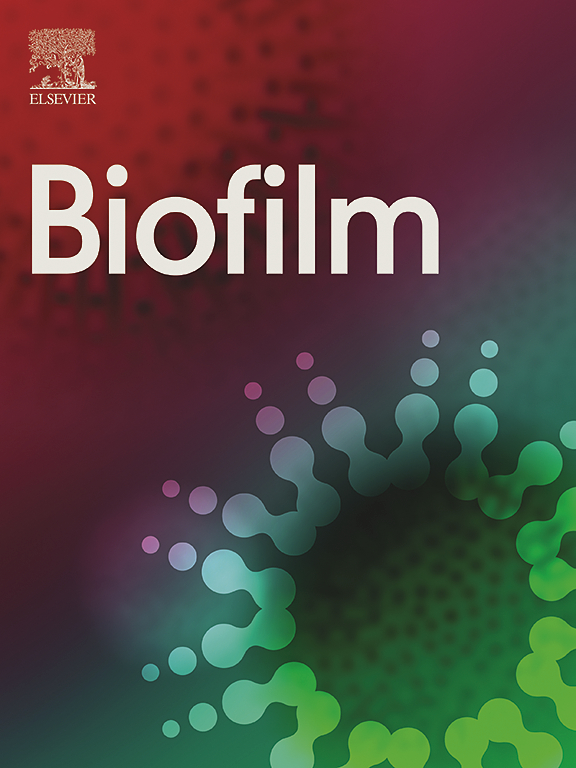Diverse reactions of aquaculture biofilter biofilms following acute high-dose peracetic acid
IF 4.9
Q1 MICROBIOLOGY
引用次数: 0
Abstract
Peracetic acid (PAA) is an effective disinfectant in aquaculture systems to reduce pathogen loads and improve water quality. However, its effectiveness in disinfecting biofilm in recirculating aquaculture systems (RAS) and resetting biofilters between productions remains unknown. This study evaluated the effects of acute PAA exposure on biofilter biofilms from freshwater RAS. Identical types of bioelements were collected from a pilot-scale RAS (without prior PAA treatment) and a commercial RAS (with PAA treatment), and exposed to PAA concentrations of 0, 1, 2, 4, 8, and 16 mg/L for 1 h. Microbial activity and viability of the exposed biofilms were evaluated using respirometry and flow cytometry. Results showed dose-dependent inhibition of biofilm activity and viability in the pilot-scale RAS. Nitrite oxidation was the most sensitive process to PAA, with an IC50 of 1.27 mg/L (the concentration at which PAA inhibited biofilm metabolic activity by 50 %), followed by ammonia oxidation (IC50 = 1.59 mg/L) and endogenous respiration (IC50 = 2.67 mg/L). Microbial activity linked to H2O2 decomposition was least affected (IC50 = 4.68 mg/L). Live cell counts decreased from 9.1 × 107 counts/cm2 to 2.4 × 107 counts/cm2 of bioelement surface, with dead cells proportion increasing from 15 % to 54 %. In contrast, biofilter biofilms from the commercial RAS exhibited significantly lower sensitivity to PAA dosage, with reductions in nitrite oxidation (39 %) and ammonia oxidation (51 %) observed only at 16 mg/L compared to control. These findings suggest that routine PAA exposure, as part of the other operating conditions on the commercial RAS, can enhance the biofilm's sensitivity to PAA. The study provides new insight into the sensitivity of aquaculture biofilm to PAA treatment and its effect on associated microbial processes.
急性高剂量过氧乙酸后水产养殖生物滤池生物膜的多种反应
过氧乙酸(PAA)是水产养殖系统中降低病原菌负荷、改善水质的有效消毒剂。然而,它在循环水养殖系统(RAS)中消毒生物膜和在生产之间重置生物过滤器方面的有效性仍然未知。本研究评估急性PAA暴露对淡水RAS生物过滤器生物膜的影响。从中试RAS(未经事先PAA处理)和商用RAS(经PAA处理)中收集相同类型的生物元素,并将其暴露于浓度为0、1、2、4、8和16 mg/L的PAA中1小时。使用呼吸仪和流式细胞术评估暴露的生物膜的微生物活性和活力。结果显示,中试RAS对生物膜活性和活力的抑制呈剂量依赖性。亚硝酸盐氧化对PAA最敏感,其IC50为1.27 mg/L (PAA抑制生物膜代谢活性50%的浓度),其次是氨氧化(IC50 = 1.59 mg/L)和内源呼吸(IC50 = 2.67 mg/L)。与H2O2分解相关的微生物活性受影响最小(IC50 = 4.68 mg/L)。活细胞计数从9.1 × 107个/cm2下降到2.4 × 107个/cm2,死亡细胞比例从15%上升到54%。相比之下,来自商业RAS的生物过滤器生物膜对PAA剂量的敏感性显着降低,与对照相比,仅在16 mg/L时观察到亚硝酸盐氧化(39%)和氨氧化(51%)的减少。这些发现表明,常规的PAA暴露,作为商业RAS的其他操作条件的一部分,可以增强生物膜对PAA的敏感性。该研究为水产养殖生物膜对PAA处理的敏感性及其对相关微生物过程的影响提供了新的见解。
本文章由计算机程序翻译,如有差异,请以英文原文为准。
求助全文
约1分钟内获得全文
求助全文

 求助内容:
求助内容: 应助结果提醒方式:
应助结果提醒方式:


